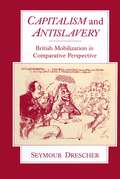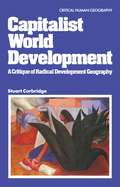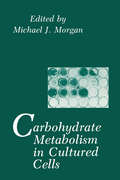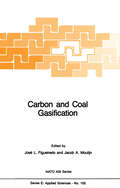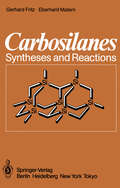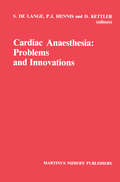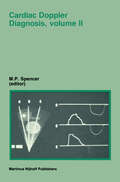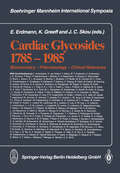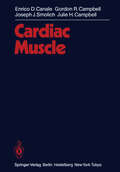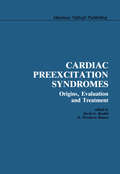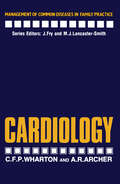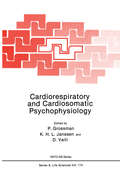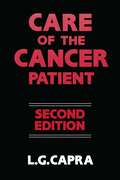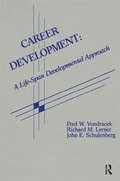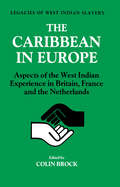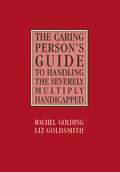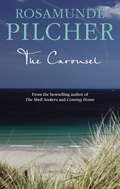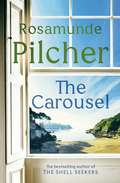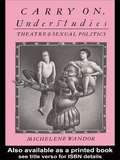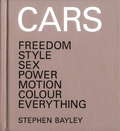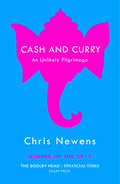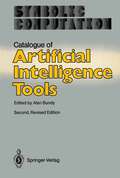- Table View
- List View
Capitalism and Antislavery: British Mobilization in Comparative Perspective
by Seymour DrescherThree hundred years ago Britain was what she is again, a mid-sized island off the coast of Eurasia. Between then and now she became the centre of a world economy. And just midway upon this imperial passage the people of the Empire, free Britons and colonial slaves, secured the destruction of slavery and hastened its demise throughout the world. Those who were part of Britain's Atlantic economy but free of direct economic dependency were the most effective agents in that process. The great novelty of this process therefore lay in the fact that for the first time in history the nonslave masses, including working men and women, played a direct and decisive role in bringing chattel slavery to an end. Seymour Drescher's study focuses attention on the period when popular pressure was effectively deployed as a means of altering national policy, and at those fault-lines in British society which seem to have partly determined the timing and intensity of abolition.
Capitalist World Development: A Critique of Radical Development Geography (Critical Human Geography)
by Stuart CorbridgeCarbohydrate Metabolism in Cultured Cells
by M. J. MorganIt is perhaps obvious to any student of Biology that the discovery of chemical processes in whole organisms has usually preceded the elucidation of the compo nent steps. However, it is perhaps less obvious that the unravelling of the se quences in which those chemical steps occur in living matter, of the precise mechanisms involved, and of the manner in which they are regulated, would have been achieved neither by the study of intact plants and animals nor even of extracts derived from them. Our ability to understand the nature and regulation of metabolism rests on two main premises: the postulate that life processes can indeed be validly investigated with individual cells and cell-free extracts, and the thesis that there is an essential "unity in biochemistry" (as Kluyver put it, 60 years ago) that enables events in one organism to be legitimately studied in another. Of particular utility in this latter respect has been the use of cultures of single-celled organisms, growing in defined media-especially prokaryotes, such as Escherichia coli, and eukaryotes, such as Neurospora and Sac charomyces sp. , to which both biochemical and genetical techniques could be applied. It was, of course, Pasteur's observations of bacterial fermentations that first overthrew the belief that oxygen was essential for all energy-yielding pro cesses: his recognition that "La fermentation . . . . . c' est La vie sans air" laid the foundations of our knowledge of glycolysis.
Carbon and Coal Gasification: Science and Technology (NATO Science Series E: #105)
by J. L. Figueiredo Jacob A. MoulijnCarbon gasification reactions form the basis of many important industrial processes, such as the combustion of coal and the produc tion of synthesis gas, fuel gases and activated carbons. They are also involved in metallurgical processes and in the regeneration of coked catalysts. Thus, understanding the fundamentals of carbon gasification is of vital importance for further technological development. Moreover, the subject is of interdisciplinary nature, involving chemistry, ma terials science and chemical engineering. Therefore, it was thought that an Advanced Study Institute would be fruitful in establishing the state of the art, in bringing together experts from the various sectors involved and in identifying areas of required research and industrial development. Such a meeting was held at Alvor, Portugal, from the 20th to the 31st May 1985, and the lectures presented the reof are collected in this volume. The present volume is organized in seven chapters. The Intro duction presents the carbon gasification reactions an~ their rele vance for particular processes and industrial uses. In the second chapter, the structures of carbon and coal are reviewed, together with methods of structural, chemical and textural characterization.
Carbosilanes: Syntheses and Reactions
by Gerhard Fritz Eberhard MaternCarbosilanes are compounds in which the elements silicon and carbon alternate in the molecular skeleton [1]. Just as the alkanes are formally derived from the diamond lattice and the aromatics from the graphite lattice, the carbosilanes are structurally derived from silicon carbide. Because of the tetravalent nature of silicon and carbon we can expect stable linear, cyclic and polycyclic compounds to occur. However, carbosilanes do not exist in nature. This book is an attempt to give a summarized presentation. Carbosilanes are, of course, part" of organosilicon chemistry, but their behavior differentiates them distinctly from other organosilicon compounds. The differences result primarily from the alternating Si-C-Si arrangements in the molecular skeleton, and especially the various methylene bridges (CH , CHX, CX ; X = halogen) cause changes in z z Si-C bond polarization and hence influence the reaction possibilities. It is convenient to regard carbosilanes as similar to silicones except that the oxygen bridges of silicones are replaced by methylene units. However, this does not accurately account for all the chemical properties of these compounds. Carbosilanes are related more directly to silicon carbide, as shown occasionally by the reactive behavior of polycyclic car bosilanes. Therefore, in view of the present interest shown for thermally stable cera mics of unusual character, interesting possibilities arise for further development. Most cyclic carbosilanes can be classified in two groups: the carborundanes and the Si-scaphanes. Compounds belonging to the carborundane class maintain Si-C six-membered rings in the boat conformation.
Cardiac Anaesthesia: Problems and Innovations (Developments in Critical Care Medicine and Anaesthesiology #12)
by D. Kettler P. J. Hennis S. LangeCardiac Glycosides 1785–1985: Biochemistry — Pharmacology — Clinical Relevance
by J. C. Skou K. Greef ErlandErdmannThe bicentenary of William Withering's now famous medical report entitled "An Account of the Foxglove and Some of its Medical Uses" has given us the occasion to analyze the state of the art. Cardiac glycosides in 1985 are considered tobe the basis for medical treatment of myocardial failure, together with diuretics and vasodilators in the more severe cases. Nevertheless, the controversy as to their exact place in the treatment of heart failure with sinus rhythm has never ceased. Although cardiac glycosides are of unquestionable value in tachycardia caused by atrial fibrillation or atrial flutter, the chronic use of these drugs in sinus rhythm is not generally accepted. The development of tolerance has been reported. It is of interest that Withering hirnself wrote: "-let it (foxglove) be continued until it either acts on the kidneys, the stomach, the pulse, or the bowels; Iet it be stopped upon the first appearance of any of these effects, and I will maintain that the patient will not suffer from its exhibition, nor the practitioner be disappointed in any reasonable expectation. " In West Germany alone, more than three million patients (about 5% of the total population) are constantly taking cardiac glycosides. These drugs are the most prescribed medicaments in many countries. Thus, we considered it worthwhile and necessary to review in a critical way today's knowledge about the foxglove; to report new findings and to evaluate old Statements.
Cardiac Muscle (Handbuch der mikroskopischen Anatomie des Menschen Handbook of Mikroscopic Anatomy #2 / 7)
by E.D. Canale Gordon R Campbell J.J. SmolichIn the ever-expanding field of heart research the needs of established re searchers, students and general readers can vary considerably, making it difficult therefore to cater for all types of audience within a single volume. The aim of this book has been to provide a comprehensive and up-to-date review of the structure of the heart, including its cell biology. The ultrastructure of the working myocardium and all portions of the conduction system, together with their development, is covered in detail. Also included are chapters on the morphometry of cardiac muscle, the innervation of the heart, cardiac hyper trophy and regeneration, and the development of the coronary circulation. A detailed review of cardiac muscle in cell culture is also provided. It is to be hoped that readers, whatever their background, will find the information contained herein useful for their needs. This work was supported by a grant from the National Heart Foundation of Australia. The authors wish to gratefully acknowledge the following people for their invaluable assistance in preparation of the manuscript: Professor Yasuo Uehara, D'r. Takashi· Fujiwara, Dr. Peter Baluk, Dr. Seiji Matsuda and Bill Kaegi for providing unpublished micrographs; Fabian Bowers, Patricia Murphy and Janet Bennett for typing; and Lucy Popadynec, Nella Puglisi, Maggie Mackie, Mary Delafield and Liana Butera for assistance with references and figure preparation. THE AUTHORS Contents A. General Introduction 1 Morphology of Cardiac Muscle 8 B.
Cardiac Preexcitation Syndromes: Origins, Evaluation, and Treatment
by D. WoodrowBenson David G. Bendittcorrection of such a reentry when he observed The W olff-Parkinson-White (WPW) syndrome, . . . in a favourable experiment, the vigorous the most common variety of preexcitation, has for some time held a fascination for those circulating wave and its instantaneous arrest by interested in clinical electrophysiology because section of the ring is a sight not easily forgotten. it seems to represent a naturally occurring event which, if adequately understood, would un Courageous is the only way to describe the mask answers to many fundamental questions first attempt to surgically interrupt an accessory concerning mechanisms and treatment of car pathway. The immensity of the feat speaks for diac arrhythmias. Thus, it has been described by itself: Open heart surgery was performed to Scherf and Neufeld [1] as the "Rosetta Stone" divide an invisible stream of electrons! This of electrocardiography. historic event was not anticipated. A fisherman The historic overview of the pre excitation from the coast of North Carolina presented to syndromes will be deferred to Dr. Burchell's Duke University Medical Center in 1968 with authoritative chapter, but a few highlights de refractory supraventricular tachycardia related serve emphasis here because they graphically to the WPW syndrome [2]. Attempts to control portray how elements of serendipity, courage, the tachycardia medically failed. Dr. Andrew and luck played important roles in the unfold Wallace (then Director of the Coronary Care Unit) had recently returned from the NIH ing of the mysteries of preexcitation.
Cardiology (Management of Common Diseases in Family Practice)
by C.F. Wharton A.R. ArcherDDDDDDDDDDDD Effective management logically follows accurate diagnosis. Such logic often is difficult to apply in practice. Absolute diagnostic accuracy may not be possible, particularly in the field of primary care, when management has to be on analysis of symptoms and on knowledge of the individual patient and family. This series follows that on Problems in Practice which was concerned more with diagnosis in the widest sense and this series deals more definitively with general care and specific treatment of symptoms and diseases. Good management must include knowledge of the nature, course and outcome of the conditions, as well as prominent clinical features and assess ment and investigations, but the emphasis is on what to do best for the patient. Family medical practitioners have particular difficulties and advantages in their work. Because they often work in professional isolation in the com munity and deal with relatively small numbers of near-normal patients their experience with the more serious and more rare conditions is restricted. They find it difficult to remain up-to-date with medical advances and even more difficult to decide on the suitability and application of new and rela tively untried methods compared with those that are 'old' and well proven. Their advantages are that because of long-term continuous care for their patients they have come to know them and their families well and are able to become familiar with the more common and less serious diseases of their communities.
Cardiorespiratory and Cardiosomatic Psychophysiology (Nato Science Series A: #114)
by P. Grossman D. Vaitl K. H. JanssenCare of the Cancer Patient
by Louis CapraThis is the second edition of a well-established nursing textbook. The author has undertaken a complete re-write of the book, and brings in not only up-to-date techniques and methods of treatment, but also the important nursing attitudes and approaches to care.
Career Development: A Life-span Developmental Approach (Contemporary Topics in Vocational Psychology Series)
by Fred W. Vondracek Richard M. Lerner John E. SchulenbergThis book places career development into the mainstream of human development research and theory. The result is a powerful synthesis of vocational psychology and the most recent advances in lifespan developmental psychology, thus offering a developmental-contextual framework for guiding theory and research in career development. Its chapters demonstrate the utility of this framework for the study of women's career development, health and careers, career intervention, and the selection and application of appropriate research methodologies. Scholars as well as intervention specialists should find this volume to be of great value. The adaption of this developmental-contextual framework for career development theory, research, and intervention may represent an important future for vocational psychology and the study of career development.
Career Development: A Life-span Developmental Approach (Contemporary Topics in Vocational Psychology Series)
by Fred W. Vondracek Richard M. Lerner John E. SchulenbergThis book places career development into the mainstream of human development research and theory. The result is a powerful synthesis of vocational psychology and the most recent advances in lifespan developmental psychology, thus offering a developmental-contextual framework for guiding theory and research in career development. Its chapters demonstrate the utility of this framework for the study of women's career development, health and careers, career intervention, and the selection and application of appropriate research methodologies. Scholars as well as intervention specialists should find this volume to be of great value. The adaption of this developmental-contextual framework for career development theory, research, and intervention may represent an important future for vocational psychology and the study of career development.
The Caribbean in Europe: Aspects of the West Indies Experience in Britain, France and the Netherland
by Colin BrockThis book is the fourth in a series of volumes to emerge from the commemoration by the University of Hull of the 150th anniversary of the abolition of slavery in the British Empire, and in particular an international conference held to discuss some of the legacies of Caribbean slavery and its abolition. Most of the chapters of this book originated as papers presented on the final day of that conference.
The Caribbean in Europe: Aspects of the West Indies Experience in Britain, France and the Netherland
by Colin BrockThis book is the fourth in a series of volumes to emerge from the commemoration by the University of Hull of the 150th anniversary of the abolition of slavery in the British Empire, and in particular an international conference held to discuss some of the legacies of Caribbean slavery and its abolition. Most of the chapters of this book originated as papers presented on the final day of that conference.
The Caring Person's Guide to Handling the Severely Multiply Handicapped
by Rachel Golding Liz Goldsmith Martin Battye... this is a remarkable activity guide for a multi-disciplinary team in the field of multiple handicap.' Natfhe Journal
The Carousel: September; Voices In Summer; The Carousel
by Rosamunde PilcherPrue is intelligent, artistic, independent - and bored. Pressurised by her mother to make a conventional and dull marriage, she is delighted to escape London and seek retreat with her eccentric and bohemian aunt in Cornwall. A chance encounter with an attractive young artist on the sea shore leads to day after idyllic summer's day of exploring the Cornish countryside and coast. But there is something troubling Daniel and Prue, now deeply entangled, feels compelled to discover what it is...
The Carousel: September; Voices In Summer; The Carousel
by Rosamunde PilcherA phenomenal, heartwarming tale by the much-loved Rosamunde PilcherPrue is intelligent, artistic, independent - and bored. Pressurised by her mother to make a conventional and dull marriage, she is delighted to escape London and seek retreat with her eccentric and bohemian aunt in Cornwall. A chance encounter with an attractive young artist on the sea shore leads to day after idyllic summer's day of exploring the Cornish countryside and coast. But there is something troubling Daniel and Prue, now deeply entangled, feels compelled to discover what it is...
Carry on Understudies: Theatre and Sexual Politics
by Michelene Wandor`one hell of a seminal read ... Here is a book that grapples, with energy, ingenuity and terrific intellectual rigour, with a bewildering forest of issues around gender and politics ... illuminating, insightful, perceptive.' - Women's Review
Carry on Understudies: Theatre and Sexual Politics
by Michelene Wandor`one hell of a seminal read ... Here is a book that grapples, with energy, ingenuity and terrific intellectual rigour, with a bewildering forest of issues around gender and politics ... illuminating, insightful, perceptive.' - Women's Review
Cars: Freedom, Style, Sex, Power, Motion, Colour, Everything
by Stephen BayleySources are eclectic, results mixed, but one thing is certain: car design is being forced up an ever tightening spiral of creativity. These machines are memorials of our tastes, yearnings and capabilities. They have layers of meaning and can, as Henry Ford knew, be read like a book... if only you know how. The story of the car is the story of how the objects of industry became a medium of artistic expression.This book tells that story in a series of case studies which reveal national characteristics: American flair, German technical suprematism, French vernacular chic, gorgeous Italian sculpture, English antiquarianism, Japanese ingenuity, Swedish responsibility. Cars featured appear in chronological date order from the 1908 Ford Model T to 2003 BMW 5 Series.The chosen cars will be specially photographed in a uniform style and reproduced in very textured, 4 colour b/w so as to distance this book from the cliches and conventions of specialist automotive publishing and to highlight form and shape. Each picture will be accompanied by a short critical essay including essential historical material together with colourful anecdotage and quotations as well as a persuasive aesthetic appraisal of each vehicle. This lavish and beautifully designed book is the gift book for all car enthusiasts and design aficionados.
Cash and Curry: An Unlikely Pilgrimage
by Chris NewensWINNER OF THE 2017 BODLEY HEAD & FINANCIAL TIMES ESSAY PRIZEIn this quest across India during the recent cash crisis, Chris Newens follows in the footsteps of TV chef Rick Stein in search of divine truth and the perfect curry. Steeped in the smells and colours of south India, Cash and Curry is a brilliantly funny and intelligent journey of discovery that muses on the love of food, various incarnations of godliness, the power of belief and the true meaning of value.
Catalogue of Artificial Intelligence Tools (Symbolic Computation)
by Alan BundyThe purpose of this catalogue is to promote interaction between members of the AI community. It will do this by announcing the existence of AI techniques and portable software, and acting as 30 pointer into the literature. Thus the AI community will have access to 30 common, extensional definition of the field, which will: promote 30 common terminology, discourage the reinvention of w heels, and act as 30 clearing house for ideas and software. The catalogue is 30 reference work providing 30 quick guide to the AI tools ava.ilable for different jobs. It is not intended to be 30 textbook like the Artificial Intelligence Handbook. It, intentiona11y, only provides 30 brief description of each tool, with no extended discussion of the historical origin of the tool or how it has been used in particular AI programs. The focus is on techniques abstracted from their historical origins. The original version of the catalogue, was hastily built in 1983 as part of the UK SERC-DoI, IKBS, Architecture Study. It has now been adopted by the UK Alvey Programme and is both kept as an on-line document undergoing constant revision and refinement and published as 30 paperback by Springer-Verlag. Springer-Verlag have agreed to reprint the Catalogue at frequent intervals in order to keep it up to date.
